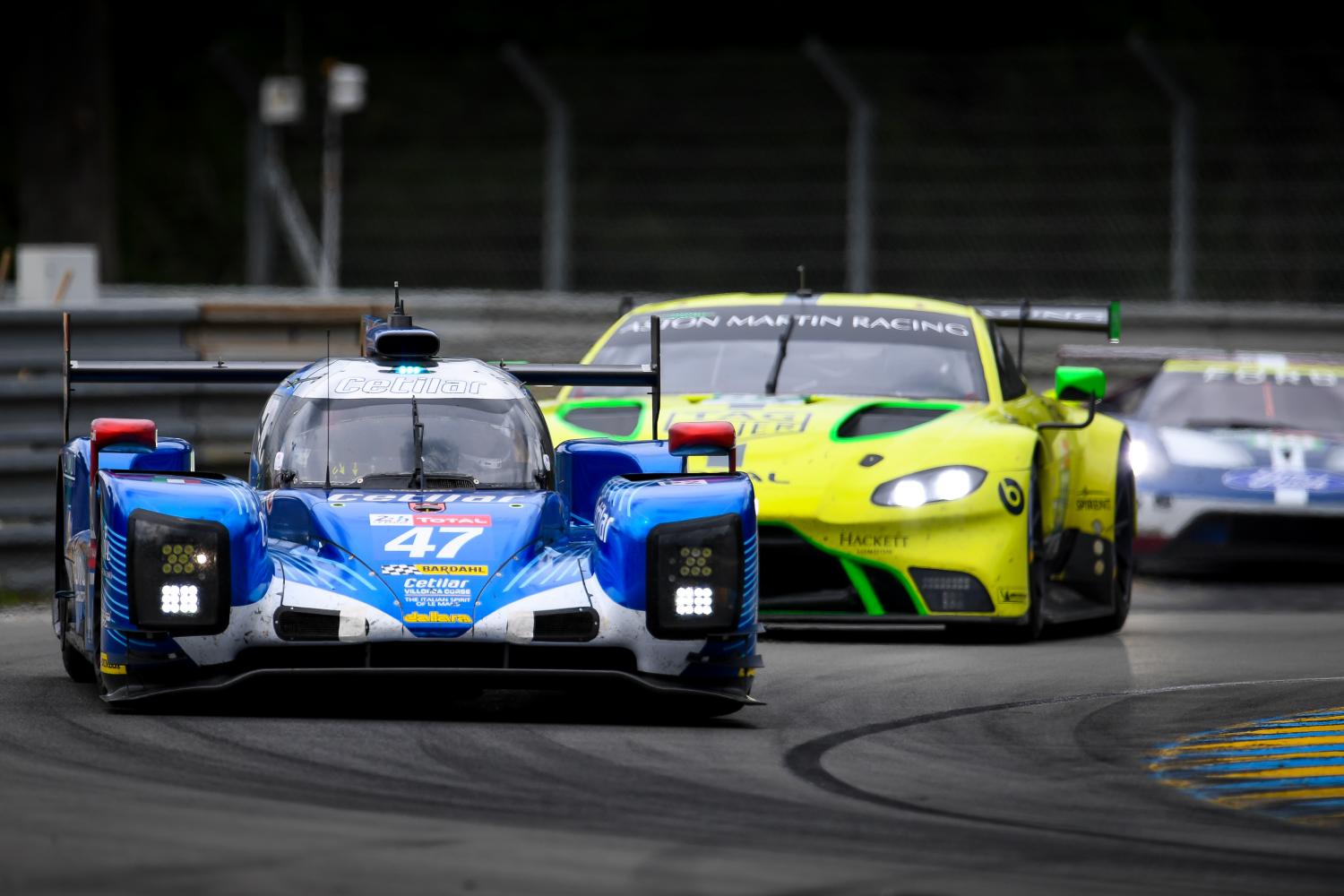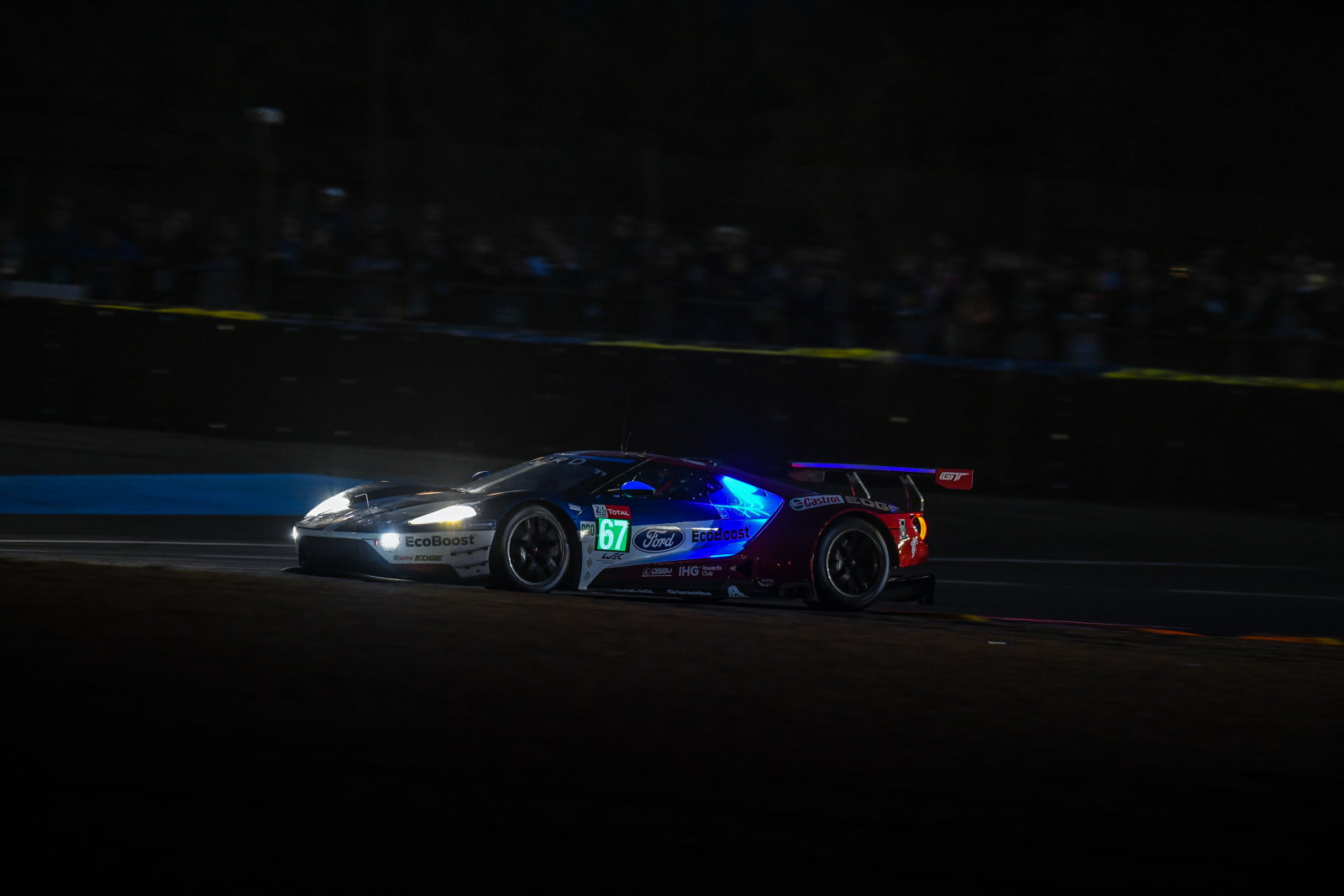How do you recognise the cars?
Four classes of car compete in the 24 Hours of Le Mans: LMP1, LMP2, LMGTE Pro and LMGTE Am. The LMP1 (Le Mans Prototype 1) class is the premier category in the 24 Hours of Le Mans. It corresponds to the most powerful and technologically advanced prototypes. They are entered by manufacturers, such as Toyota this year, or private teams such as Rebellion Racing. There are ten of them on the grid. LMP2s are also prototypes but less sophisticated. They are relatively close to the LMP1s in terms of performance. There are 20 cars entered in the LMP2 class. Finally, the 24 Hours of Le Mans would not have the same flavour without its GTE (Grand Touring Endurance) categories. The 17-car LMGTE Pro field is, in fact, one of the most hotly contested in this 86th running of the race. Ferrari, Porsche, Chevrolet Corvette, Ford, BMW and Aston Martin will fight for a prestigious victory. The previous year’s models are regularly handed down from this class to the LMGTE Am category.
Class colour coding
To help spectators identify the cars, a specific colour is assigned to each class. The numbers of the LMP1 cars are shown on a red background. The LMP2s have a blue background. Green is for LMGTE Pro while the LMGTE Am class is orange. These numbers are displayed on both sides of the cars and on the hood.
Which car is leading in each class?
This is a question that trackside spectators often ask. The answer is easy: each car has three diodes on each side, known as the Leader Light System. If a single light is lit, it means the car is class leader. Two diodes lit indicate the second-placed car and three the third. If no diodes are lit, the car is further down the standings. The system comes into its own at night.
Historic liveries
Another way of recognising a car from the trackside is its livery. And there are some traditions that never die. A Ferrari is red, an Aston Martin green and a Chevrolet Corvette yellow. In a nod to its famous Art Cars, Porsche GT Team has given two of its four 911 RSRs entered in the LMGTE Pro class a special livery to celebrate the 70th anniversary of the marque. The #91 is painted in the colours of an emblematic cigarette manufacturer of the 1980s, while the #92 pays tribute to the 917 “Pink Pig” of 1971. This pink livery has sections of the car labelled in butcher-style cuts! As the speciality of Le Mans is, of course, the famous pork rillettes, this design certainly raises a few eyebrows!
When you have got used to recognising the cars from their appearance, how about trying to identify them from the sound they make?!
To see the standings in real-time or find out about particular race incidents, why not download an app? You have a choice of two.
24H LE MANS
Download the app to keep track of the 24 Hours of Le Mans, the standings, teams, drivers, schedule, photos, videos, interviews, highlights, results and social media activity.
To follow the race in detail and access full live coverage, starting with the practice sessions, sign up for our premium pack for Le Mans only. For just €9.99, get all the rankings, exclusive content, images from the 14 onboard cameras and customise the app to follow your favourite drivers or teams.
App available from the AppStore and Google Play.
LE MANS CIRCUIT INFO
Find out all about the legendary race: the people, its regulations, its history and key points of the circuit. Discover all the strategic spots of the iconic circuit: the Mulsanne Straight, Mulsanne Corner, the Dunlop Chicane, and more!
Consult the handy guide to prepare your visit and find where you can catch the shuttle service to get to the different vantage points and entertainment areas around the circuit. The app has a function to geo-locate the shuttles.
App available from the AppStore and Google Play.
PHOTO: LE MANS (SARTHE, FRANCE), CIRCUIT DES 24 HEURES, 24 HOURS OF LE MANS, WEDNESDAY 13 JUNE 2018, FREE PRACTICE. There are two broad types of car at the 24 Hours of Le Mans: prototypes and grand tourers. Trackside fans have several ways of identifying them.







